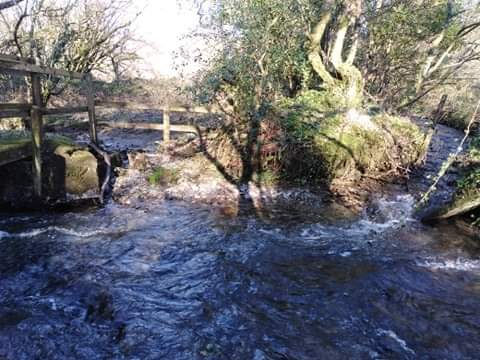Hedging your bets - how to save time, money and resources when planting hedges by sowing seeds.
- Adam Dawson

- Dec 15, 2021
- 2 min read

Direct seeding of broadleaf woodland is a technique that has been recognised as having potential for the effective creation of more naturalistic new woodlands (1, 2). Compared to conventional planting it can be cheaper, quicker, less labour intensive and use less non-renewable resources in plant production and transportation. Applying this to hedge planting and incorporating seed into a mulch layer (3), saves herbicide application or fossil fuel in site preparation and maintenance controlling existing vegetation. Incorporating thorny species may offer protection from large herbivores as the hedge gets established (4), saving non-renewable resources, labour and fossil fuels to erect fences, and protect with plastic tree guards and bamboo stakes.
If successful the system could easily be semi or full automated, applying the pre-seeded mulch from a trailer behind a tractor. In which case the scale of achievable hedge planting could be significantly increased at a fraction of the cost of conventional planting methods. It could also increase plant density resulting in thicker hedges establishing more rapidly, increasing on farm benefits of shelter, biodiversity benefits for habitat and higher levels of carbon sequestration. It may however prove to have low establishment rates and be less reliable.
To help us to find out four landowners have kindly agreed to let us have a go on their farms. The details are contained in the linked document and a summary follows.

Sites
Location | Herbivores | Conditions |
Dyffryn Cefn Faes | Cattle | 2 x hedgebank: aspect, elevation grazing pressure variation |
Penffordd | Sheep and horses | 2 x hedgebank either side same field, within fence |
Fronfedw | Sheep and rabbits | ‘L’ shape, field corner within existing hedge |
Canolfan Clydau | None | 2 x new hedge, on landscaped ground adjacent wall & fence |
Treatment
Hawthorn, blackthorn, dog rose, rowan, birch and crab apple fruits were collected locally and the seed coarsely extracted. It was then mixed with sand and mycorrhizal inoculant.
At each site:
1. a layer of cardboard was put down,

2. followed by some compost and the seed mix,

3. compost was topped up,

4. Fixed point established and photo taken
Monitoring has been scheduled for next year, and observations in between will be recorded in consultation with the landowners. During the preparation of the experiment it became apparent that some of these seeds may take 2 years to germinate.
References
Creating new broadleaved woodland by direct seeding Forest Research
Direct seeding of birch, rowan and alder can be a viable technique for the restoration of upland native woodland in the UK Institute of Chartered Foresters
So mulch lovin’! How mulches help get trees off to the best start Agricology
No Fence Planting Restoring Habitats and Ecosytems Tree Shepherds



Any Update on these, as I'm Interested to see how the got on?